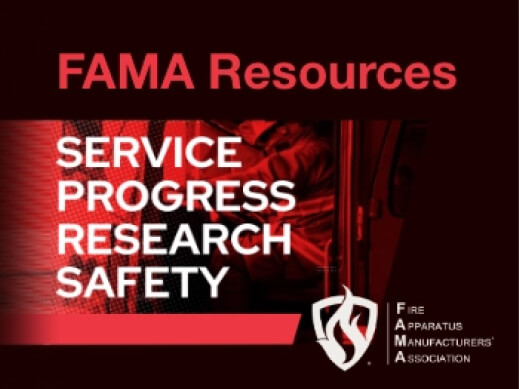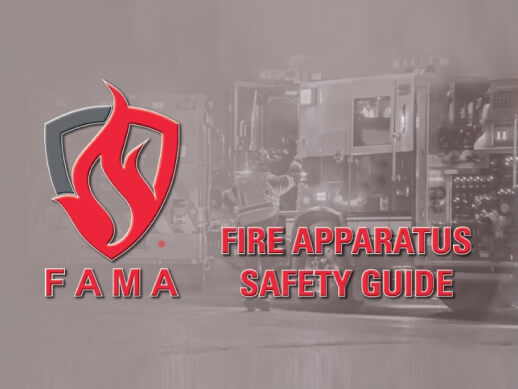The Advanced Clean Transportation Expo takes place in Long Beach California each year and is the main event highlighting emerging alternate fuels technology in medium and heavy trucks. It is an opportunity for truck builders like Paccar, Navistar, Volvo, Freightliner, and a host of specialty vehicle and component manufacturers to highlight progress in the clean transportation field. Volvo has been studying alternative fuel emerging technology for decades and in 2003 presented seven potential alternative fuels technologies to the European Commission. They are now convinced that of all the alternative fuel approaches, the electric truck is the answer for the future. Peter Voorhoeve, President of Volvo Trucks North America, addressed a packed audience and spoke enthusiastically about the future of trucking; “Right now we believe with the technology we have at hand electro-mobility, based upon renewable energy, is the way forward”.
So, what does this mean for the fire industry? If you had asked me that question a decade ago, I was a pessimist. I would have answered that electrification of fire apparatus does not make sense. The need for an emergency vehicle to continue working, no matter what, was a barrier that I did not see could be overcome with the technology of the day. Fast forward to 2021 and the rules have changed. While I believe that diesel power as a backup is still a prudent approach, the advancement in batteries, motors, and charging systems has progressed to the point where an all-electric fire truck is now an option. This opinion is borne out by the fact that three major FAMA companies are now offering an electric apparatus for sale.
Case for Electro-Mobility
The most obvious advantage of electrification is the elimination of tailpipe emissions that both advances the goals of a clean city initiative and provides a cleaner, safer environment at that emergency scene. While modern diesel engines do not emit the old black smoke exhaust, electrification eliminates all risk of hot smelly exhaust around the apparatus.
A second on-scene advantage is that there is no diesel engine noise to contend with. While there will be some pump noise during fire suppression, it will be much quieter than the typical diesel roar. The reduction of noise is also a benefit to pedestrians, helping to reduce the noise pollution that is prevalent in urban settings.
Climate change is a third factor in going electric. As we shift from fossil fuel to electric transportation, we increase the potential shift to clean renewable energy across the spectrum.
Finally, electrification can give the vehicle designer more freedom in where to locate components. Smaller battery capacity and smaller range extenders can allow a reconfiguration of the cab, opening up alternative seating configurations that some departments may find appealing.
The Range Extender
It is still a fact that the need for emergency vehicles to be able to perform continuously presents a dilemma for electric storage. There are a few approaches being employed in the Electro-Mobility world to take over when the battery storage is depleted. One is the fuel cell. This technology uses a chemical process that turns hydrogen into electricity with no moving parts and no noise. Several specialty vehicle designs employ a fuel cell to extend the range of an electric vehicle. Hydrogen is stored on-board in a tank and can either be purchased commercially or be produced from a conversion unit near the point of use. While this is a good option in certain applications, it has not been proposed as a solution for fire apparatus.
The more practical option for fire apparatus is the use of an internal combustion engine as a range extender, either to generate electric power or as a secondary means of propulsion. Both methods are in play at FAMA manufacturers. Whatever the approach, apparatus designers appear to agree that there must be some means of keeping the water pumping after the battery charge is depleted.
Electric Apparatus and the NFPA Pump Test
To this point the NFPA committee has not considered electric vehicles in the standard. To be certified the truck must pump for two hours straight before being refueled. The standard does not address whether the apparatus is running on diesel, hydrogen, CNG or electricity, so it is left to the manufacturer to determine how they will certify the pump rating. A fully electric certification would need enough battery storage to make it through the first two hours of pumping. Another means of certification would be to run the range extender during the test. Stay tuned for how this ends up being resolved at either the industry or NFPA level.
More than Just a Truck
When we first began working on an electric fire truck our company focus was on the design of the “machine”. We could draw on the experience of our sister companies who have electric bus and yard trucks, and on the experience of our global partners. It has been very fun and exciting, but the focus was on designing the apparatus. As the project has progressed, I have come to realize that designing a great machine is only half the challenge. The other half is fitting the machine to an entirely new process, and helping our customers adapt to a new way of operating.
Duty cycle studies is one of the key things that will make or break an electric vehicle program. Good data on how the vehicle will be used is essential to making sure the vehicle will be both useful and will meet the green and clean expectations of both the fire department and the municipality they serve. Other important considerations include charging capability, utility infrastructure, service training, and battery life cycle; all topics that are new to our fire apparatus world.
Trucking Industry Experience
As the fire industry explores Electro-Mobility, I think it is appropriate to learn from the experiences of related industries. A good resource to check out is the “Run-On-Less” initiative of the North American Council for Freight Efficiency (NACFE). This is a collaboration sponsored by members of the trucking industry. It was originally established to learn from fleets who were experimenting with alternative fuels and hybrid electric trucks. Today their focus is on tracking the progress of electric truck pilot programs. Fleets such as Ryder, Frito-Lay, Penske and others are taking part. The NACFE.org website presents statistics and driver interviews demonstrating real-world electric truck technology featuring 13 trucks driving real routes and carrying real freight. Drawing on the enthusiasm from the Run-On-Less Electric truck drivers it is easier to imagine a day when electric fire trucks are the norm rather than the exception.
Being a First Adopter
It takes courage to step out and try something new, but unless we try new things we will never learn and grow. While many are willing to watch and wait, there is a strong benefit to be derived from adopting new technology and learning for yourself how it can be applied. I make it a practice in my own life to try to avoid the “well we never had that in my day” syndrome. I believe early adopters will look back years from now and wonder at how far the new products have progressed, but also realize that they have a more effective organization for the learning gained from beginning when they did.
Looking to the Future
There is one more force that changed my attitude on electric fire trucks. During my life I have been blessed with access to cheap energy, clean air, and safe drinking water. I hold my granddaughters and wonder what blessings they will have. There is a strong argument that a few electric fire trucks will not change the course of our global environment. But perhaps an electric fire truck in your station can inspire others to begin embracing changes that will inevitably be necessary to make life better for those who come after us. We in the fire industry hold a very precious gift in our ability to inspire our youth. If the future is electric vehicles, as it seems to be, perhaps now is the time to reconsider any pessimistic attitudes and wade into a brighter future together.
FAMA is committed to the manufacture and sale of safe, efficient emergency response vehicles and equipment. FAMA urges fire departments to evaluate the full range of safety features offered by its member companies.
FAMA Forum creative content is contributed by unpaid volunteer authors. Any opinions expressed herein are exclusively those of the author and are not intended to represent the views of FAMA or its member companies.






